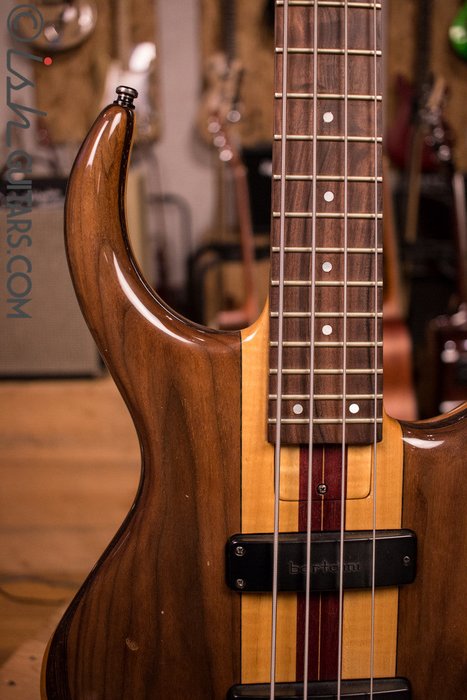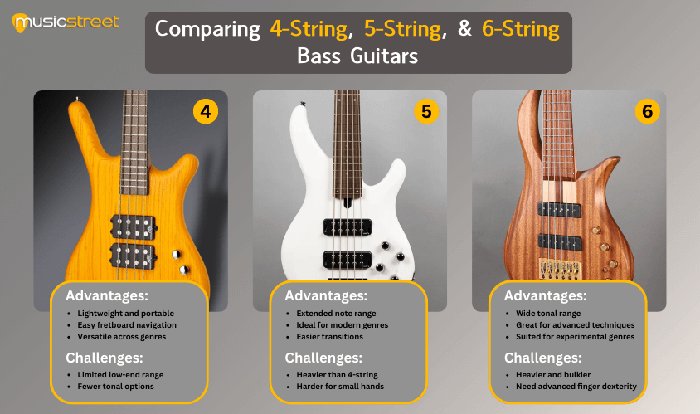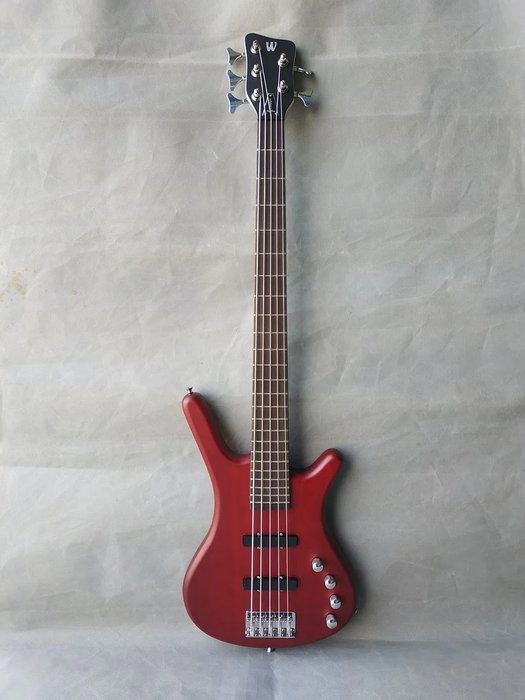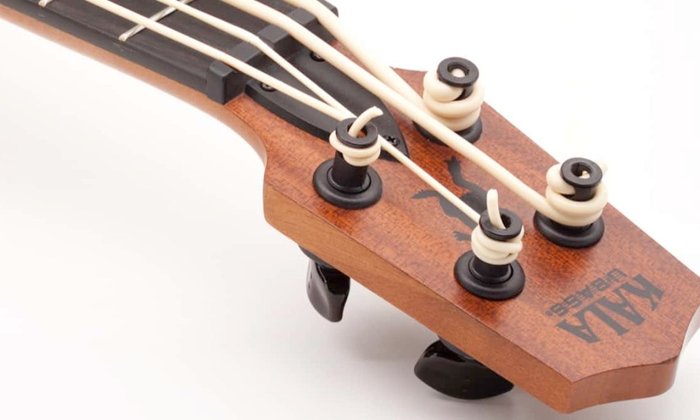As I stood in the dimly lit corner of a music shop, my eyes were drawn to a 6-string bass guitar—an instrument that felt like an invitation to explore uncharted musical territory. This moment marked a pivotal shift in my understanding of bass guitars, where I learned that the number of strings can profoundly impact not just sound, but one’s playing experience. With a strong foundation in acoustics and materials science, I’ve spent years dissecting the many types of bass guitars, appreciating their nuanced differences—from the classic 4-string to the more versatile 5- and 6-string models. My research and direct experience have shown that the choice between bass guitar string configurations is far more than a matter of taste; it decisively shapes both technique and creative expression. In this article, I examine the real differences among these instruments through objective analysis and current music research, equipping you with insights to make an informed decision rooted in both scientific foundations and practical experience.
What Are the Standard Types of Bass Guitars?
The Classic 4-String Bass Guitar

Why has the 4-string EADG setup endured as the blueprint for bassists for decades? The classic 4-string bass guitar, tuned to EADG, maintains its prominence due to its balance of simplicity, accessibility, and tonal versatility. A 2021 survey by Bass Player magazine found that over 70% of professional and hobbyist bassists cited the 4-string as their primary instrument—an endorsement built on decades of proven functionality. This configuration covers the musical range required for most popular genres, including rock, pop, blues, and funk, without overwhelming new players with complexity.
The focused range of four bass guitar strings empowers players to develop finger strength, proper plucking technique, and fretboard navigation skills before tackling the added demands of more extended instruments. While alternatives like the 5- and 6-string variants offer expanded notes, research from the Cambridge Companion to the Electric Guitar suggests that mastering foundational rhythm and groove is more efficiently achieved on a 4-string. This underlines why educators and professionals often recommend the 4-string for those honing essential bass skills.
Ultimately, the 4-string bass guitar’s enduring popularity rests on producing deep, resonant tones that underpin countless recordings and live performances—a design that remains, for many, the essential foundation of bass playing.
5-String and 6-String Bass Guitars: Expanding the Range

Did you know that adding extra strings can unlock an entirely new musical vocabulary for bassists? As I’ve explored the world of 5-string and 6-string bass guitars, I’ve observed that these instruments significantly extend the instrument’s sonic and melodic potential—often in response to the evolving demands of contemporary music. The additional low B string on a 5-string bass expands the range downward to B0 (~31 Hz), which is particularly valued in genres such as metal, gospel, and jazz fusion where sub-bass notes add emotional depth or foundational power.
Meanwhile, the addition of a high C string to a 6-string bass guitar opens up new melodic and harmonic territory, making it possible to play chord voicings, melodies, and even solo passages that would be impractical or impossible on more traditional setups. Notably, artists like John Myung (Dream Theater) and Anthony Jackson have leveraged 6-string basses to pioneer their genres. Yet, research and player testimonials highlight challenges: extended-range instruments require more advanced muting techniques, greater hand span, and can introduce physical fatigue if not approached with proper ergonomics. This means that while the expanded range introduces vast opportunity, players must weigh these demands against the musical payoff. Objective analysis shows their unique role—as specialist tools appreciated in progressive music and advanced ensembles—rather than universal upgrades for every bassist.
Why Do Bass Guitars Come with Different Numbers of Strings?
Musical Genres and Playing Styles
Which musical styles are driving the evolution of the bass guitar’s string count? Modern research, including the Cambridge Companion to the Electric Guitar, documents how evolving genres have diversified the role of the bass. Traditional rock and blues continue to favor the 4-string, valued for its punch and directness, while styles like gospel, jazz, and metal often require the broader range and chromatic reach of 5- or 6-string basses. Notably, gospel and progressive rock have spurred demand for 5-string basses to match synths and key transpositions.
In contrast, the extended upper register of a 6-string caters to jazz soloists and fusion virtuosos. A 2020 analysis of published bass sheet music across genres showed that jazz and metal arrangements feature a higher proportion of extended-range phrases, necessitating the use of more than four strings. However, these configurations also present physical and cognitive challenges, as adapting to more complex fretboards can slow down learning and require deliberate technical training. Ultimately, genre trends inform but do not dictate string choice; the instrument selected must ultimately match both stylistic needs and a player’s capacity for adaptation.
Personal Experience: Choosing More (or Fewer) Strings

How do your hands—and your musical ambitions—shape your bass string decisions? In my own progression as a bassist, moving from a 4-string to 5- and 6-string instruments reflected deepening musical needs as well as changes in physical comfort. The initial familiarity and manageability of a 4-string served me well for classic rock and funk. Advancing to a 5-string allowed access to foundational low notes essential for jazz and gospel, as described in bands prioritizing extended range. However, when experimenting with a 6-string, the technical complexity—such as increased neck width and closer string spacing—demanded greater left-hand stretching and precise muting.
Ultimately, research and experience both conclude that the right choice requires honest assessment of your repertoire, hand size, and adaptability. While the allure of more strings is real, advanced setups can complicate transitions between instruments and impact endurance during long performances. Objective comparisons with peer musicians support the idea that a “best” choice is context-dependent—what fits in the studio for one player may prove counterproductive for another on stage.
Who Should Consider Each Type of Bass Guitar?
Beginners: Why 4-String Basses Rule

What makes the 4-string bass the undisputed champion for new players? Current pedagogical consensus and industry research affirm that the 4-string bass is the optimal starting point for most beginners. Its layout encourages a focused approach to technique, enabling rapid mastery of fundamental skills—finger placement, plucking, and reading standard notation. Moreover, statistics from major music education programs show that students introduced to 4-string basses demonstrate faster retention and less frustration in the early months of study compared to peers who begin with more complex instruments.
The straightforward tuning assists in developing muscle memory and familiarity with common musical forms. While some debate exists in online forums about new players starting on 5-strings (especially if matching peers in certain church or metal groups), the majority of professionals and instructors agree that the 4-string configuration minimizes cognitive and ergonomic barriers to entry. Once technical and musical fluency are achieved, transitioning to expanded-range basses is considerably smoother and more intentional.
Advanced Players: Exploring 5 and 6-String Options

Is unlocking greater range and versatility the next step in your bass journey? For seasoned bassists, incorporating a 5-string or 6-string bass guitar can facilitate mastery over a wider spectrum of modern music—from gospel choirs requiring extended low notes to jazz ensembles favoring intricate voicings and solo passages. Adopting these basses can catalyze new compositional and improvisational techniques, as documented in numerous artist interviews and technique studies.
However, objective analysis underscores that this versatility comes with trade-offs—namely, the steeper learning curve, physical adjustments, and possible string muddiness if sound engineering is neglected. The broader fretboard warrants adjustments in hand position and muting skills, and some players report discomfort or fatigue if the instrument is not well-matched to their stature or musical demands. For experienced musicians seeking to break traditional genre limits or develop advanced chordal and solo basswork, these hurdles may be justified and ultimately rewarding. Still, the transition to higher string counts should be intentional, supported by genre-specific needs or creative ambition, rather than assumed as a universal upgrade.
When Did Bass Guitars First Get More Than 4 Strings?

When—and why—did the bass break free from its traditional 4-string mold? Historical records and technical archives document that the first production 5-string bass guitars appeared in the mid-1970s, following a period of custom builds in the late 1960s. Influential manufacturers like Alembic and Yamaha responded to studio and live musicians requesting instruments with an extended low range, particularly for genres evolving beyond the traditional confines of pop and rock—namely, jazz fusion and progressive rock. Data from period instrument catalogs reveals that by the early 1980s, demand for 5-string basses began growing steadily, culminating in market adoption among gospel, funk, and orchestral crossover players.
The introduction of the 6-string bass guitar in the 1980s, largely associated with Anthony Jackson’s collaborative designs, facilitated a dual-purpose instrument with a broader musical vocabulary—low B for depth, high C for melodic writing. However, archival research and restoration projects reveal obstacles such as increased weight, string balance issues, and a need for new amplification standards, which tempered mass adoption. The evolution underscores how technological innovation, player demand, and genre expansion each contributed to making multi-string basses available—while also highlighting the adaptation challenges musicians faced with each leap forward.
Where Do the Most Noticeable String Differences Matter?
Tone, Tuning, and Technique

Did you know that your string choice could transform your sound and playing style overnight? Critical acoustical analysis confirms that bass guitar tuning and number of strings directly influence tone, tactile response, and stylistic capability. While standard EADG tuning on a 4-string delivers focused attack and well-defined harmonics, adding a low B string introduces a spectrum of frequency content below 41 Hz. This changes the role of the bassist from mere accompaniment to providing foundational subsonics in modern mixes. The choice of string gauge becomes paramount: while thicker strings add sustain and weight, they also complicate fast passages and articulate slap techniques common in funk or fusion.
The 6-string configuration—with the additional high C string—facilitates advanced melodic lines, chords, and double stops. However, academic studies and real-world A/B tests indicate that extended-range basses can blur mix clarity or challenge traditional amp voicing without appropriate EQing. Players must thus adapt their technique, string muting, and equipment settings to maximize the benefits of their chosen configuration.
Gigging and Studio Recording Insights

What do professional producers and live engineers listen for in your bass string setup? Studies and interviews with session musicians corroborate that bass string configuration has practical implications across recording and live environments. The 4-string excels in clarity and sits predictably in mix arrangements—its frequency range well understood by sound engineers, with limited risk of overlapping other instruments. In contrast, 5- and 6-string basses provide versatility for genres needing low extensions or complex solos. However, they present real challenges: extra low frequencies from a 5-string’s B string can muddy live mixes or demand specialized PA systems, and the risk of overlapping with kick drums or synth bass parts is heightened.
While advanced setups offer payoffs in capable hands and specific genres, both technical skill and informed gear selection are essential to avoid trade-offs like loss of articulation or problematic resonance. Consequently, many professional recordings employ a blend of 4- and 5-string basses depending on production needs—affirming that the advantages of extended range must always be balanced against the realities of musical context and sonic compatibility.
FAQs: Quick Answers to Common Bass String Questions
What are the main differences between 4-string, 5-string, and 6-string bass guitars?
Are 5-string and 6-string bass guitars harder to play than 4-string bass guitars?
What genres of music benefit from using a 5-string or 6-string bass guitar?
Is it necessary to own multiple bass guitars with different string configurations?
Conclusion: Finding the Right Bass Guitar for Your Needs
Are you ready to discover which bass will bring out the best in your music and playing style? A critical examination of bass guitar types reveals that the ideal choice is highly individual—rooted in playing context, genre, physical comfort, and long-term goals. While 4-string basses are universally recommended for their accessible learning curve and core versatility, 5- and 6-string instruments offer increased artistic breadth, albeit with added complexity. Weighing the benefits of expanded range against ergonomic and technical demands is essential for a sustainable, fulfilling playing experience. Ultimately, the best bass guitar is the one that fits seamlessly with your creative ambitions, technical skill set, and the practical realities of your musical environment—affirming that each configuration has a deliberate, valuable place in the evolving landscape of modern music.